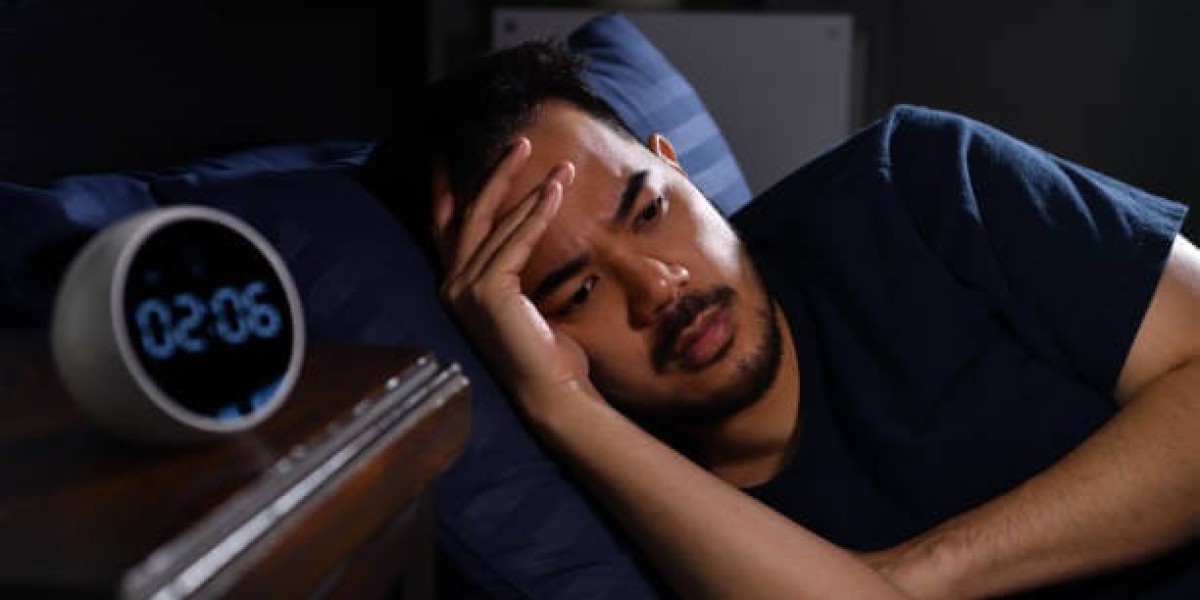One essential component of human life, sleep, is sometimes taken for granted until it starts to elude us. Millions of people around the world suffer from insomnia, which affects their everyday lives and is more than just a temporary annoyance. For the purpose of creating efficient solutions for this prevalent but complicated problem, it is essential to comprehend the science underlying sleep and insomnia.
The Fundamentals of Rest
The complexities of sleep itself must be fully understood before one can fully understand insomnia. Each stage of the dynamic process that is sleep serves a vital purpose for both physical and mental health. These stages include rapid eye movement (REM) sleep and non-rapid eye movement (NREM) sleep, which are divided into three distinct phases.
The body goes through physiological changes that are favorable to repair and restoration during NREM sleep. Light sleep (Stage 1), transitional sleep (Stage 2), and deep sleep (Stage 3) are all included in this phase. Slow-wave sleep, sometimes referred to as deep sleep, is especially important for immunological response, memory consolidation, and physical recuperation.
Conversely, REM sleep is linked to more active brain activity and vivid dreams. Even though its precise purposes are still being discovered, REM sleep is thought to be essential for memory, learning, and emotional processing.
The Function of Sleep Cycles
Circadian rhythms, which are natural biological processes that occur in roughly 24-hour cycles, are essential to the regulation of sleep-wake cycles. The body's master clock, the suprachiasmatic nucleus (SCN) in the hypothalamus of the brain, regulates a variety of physiological and behavioral rhythms in response to external stimuli, chief among them being light.
Light exposure, especially from the sun, aids in bringing the internal clock into sync with the outside day-night cycle. In addition to helping to initiate sleep and control circadian rhythms, the pineal gland secretes the hormone melatonin in response to darkness.
Sleep disturbances and insomnia can arise from disruptions to circadian rhythms, such as shift work, jet lag, or irregular sleep schedules. Further exacerbating these disruptions are specific medical conditions, medications, and lifestyle factors.
Insomnia's Neurobiology
The disorder known as insomnia is complex and has multiple underlying causes, such as environmental, psychological, and neurological ones. Neuroimaging studies have shed light on the brain regions and neural pathways involved in sleep regulation and insomnia, even though the exact cause of the condition is still unknown.
Changes in the activity of important neurotransmitters, including dopamine, serotonin, and gamma-aminobutyric acid (GABA), have been linked to the pathophysiology of insomnia. The main inhibitory neurotransmitter in the brain, GABA, is essential for both initiating and sustaining sleep. An inability to initiate and sustain sleep is a possible result of dysregulation of GABAergic neurotransmission in insomnia.
Similar to how changes in the dopaminergic and serotoninergic systems can alter circadian rhythms and sleep-wake regulation, they can also result in insomnia symptoms. Dysfunction in brain regions involved in arousal, stress response, and emotional processing, such as the amygdala, hippocampus, and prefrontal cortex, may also contribute to insomnia's onset and perpetuation.
Psychological and Behavioral Factors
In addition to neurobiological factors, psychological and behavioral variables play a significant role in insomnia. Stress, anxiety, depression, and other mood disorders are closely intertwined with sleep disturbances, often exacerbating insomnia symptoms.
Cognitive-behavioral factors, including maladaptive sleep habits, dysfunctional beliefs about sleep, and excessive monitoring of sleep, can perpetuate insomnia and hinder treatment outcomes. Cognitive-behavioral therapy for insomnia (CBT-I), a structured therapeutic approach targeting these factors, has emerged as the first-line treatment for chronic insomnia and has demonstrated efficacy comparable to pharmacotherapy.
Environmental Influences
Environmental factors, such as noise, temperature, and light exposure, can profoundly impact sleep quality and duration. Excessive noise, especially during the night, can disrupt sleep architecture and contribute to insomnia symptoms. Similarly, an uncomfortable sleep environment, characterized by high temperatures or inadequate bedding, can impair sleep onset and maintenance.
Light exposure, particularly blue light emitted by electronic devices, can interfere with melatonin secretion and disrupt circadian rhythms, thereby exacerbating sleep disturbances. Adopting sleep hygiene practices, such as minimizing exposure to electronic screens before bedtime and creating a conducive sleep environment, can help mitigate these environmental influences on sleep.
Clinical Assessment and Management
The diagnosis and management of insomnia entail a comprehensive evaluation of the individual's sleep patterns, medical history, psychiatric comorbidities, and lifestyle factors. Objective measures, such as polysomnography (PSG) and actigraphy, may be utilized to assess sleep architecture and identify underlying sleep disorders.
Treatment approaches for insomnia encompass pharmacological and non-pharmacological interventions, tailored to the individual's specific needs and preferences. Pharmacotherapy, typically involving sedative-hypnotic agents such as benzodiazepines and non-benzodiazepine receptor agonists, may be prescribed for short-term relief of insomnia symptoms.
However, due to the risk of tolerance, dependence, and adverse effects associated with long-term use, pharmacotherapy is generally recommended as a second-line option or adjunct to non-pharmacological interventions. Cognitive-behavioral therapy for insomnia (CBT-I), comprising sleep restriction, stimulus control, relaxation techniques, and cognitive restructuring, has emerged as the gold standard for chronic insomnia management.
Future Directions
Advancements in sleep research continue to deepen our understanding of the complex interplay between sleep, circadian rhythms, and health outcomes. From elucidating the genetic determinants of sleep disorders to exploring novel therapeutic targets, ongoing scientific endeavors hold promise for innovative approaches to insomnia prevention and management.
Furthermore, the integration of digital health technologies, such as wearable devices and mobile applications, into sleep monitoring and intervention programs offers new opportunities for personalized and accessible sleep care. By harnessing the power of data analytics and artificial intelligence, researchers can glean valuable insights into sleep patterns, identify risk factors for insomnia, and optimize treatment strategies for individuals with sleep disturbances.
In conclusion, insomnia represents a significant public health concern with far-reaching implications for physical, mental, and cognitive well-being. By unraveling the mysteries of insomnia through interdisciplinary research and evidence-based interventions, we can empower individuals to reclaim restful and rejuvenating sleep, thereby improving their overall quality of life.







